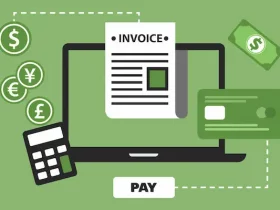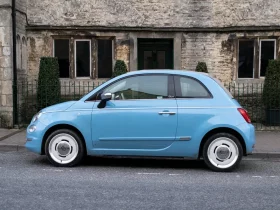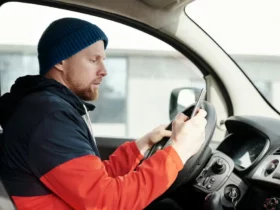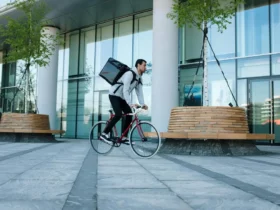Ever caught yourself wondering just how much to tip your delivery driver? I’ve been there, too. It’s a common conundrum that many of us face, especially in today’s gig economy where food delivery is just a tap away.
Tipping can be a bit of a mystery, but it’s an important way to show appreciation for the person who’s brought your meal right to your doorstep. Whether they’ve braved the rain or juggled an extra-large order, those tips mean more than you might think. Let’s dive into the ins and outs of tipping your delivery driver.
Decoding the Gratuity Puzzle: How Much Should You Tip Your Delivery Driver?
We’ve all been there, the moment you’re finalizing a food delivery order and the tipping field pops up. Suddenly, you’re playing a mental game of Jeopardy! with yourself: “What is the right amount to tip?” It’s a common scenario in a world where food delivery is becoming increasingly popular. But let’s cut through the noise and make sense of the tipping game.
It’s essential to know that tips are a significant part of a delivery driver’s income. Unlike some restaurant staff, delivery drivers often rely on these extra bits of cash to make their jobs financially viable. The simple act of tipping isn’t just polite; it’s impactful.
Here’s the rub: drivers can see your tip before they accept the delivery on platforms like Grubhub. A low tip can lead to your dinner making the rounds from driver to driver, chilling as the clock ticks. Imagine drivers peeking at their app, seeing a 10 or 40-cent tip, and promptly hitting “pass.” Stories circulate of meals arriving cold, late, or not at all because the compensation didn’t stack up.
So, what’s the magic number? While a specific percentage might not fit every situation, consider tipping similar to how you would at a sit-down restaurant—15-20% is a good starting point. If conditions are poor, like inclement weather or a holiday rush, it’s not just considerate but advisable to tip on the higher end. Your kindness reflects the difficulty of the job and ensures that your food arrives promptly and as hot (or cold, if that’s your thing) as intended.
Here are some figures to contemplate:
| Service | Suggested Tip Percentage |
|---|---|
| Standard | 15% |
| Good Service | 18% |
| Exceptional | 20% or more |
A generous tip doesn’t just guarantee a happy driver; it fosters a system where everyone wins. You get your food on time, and the person bringing it to your doorstep feels appreciated for their service. It’s a small gesture that goes a long way, especially considering the holiday season—a time when generosity and gratitude can mean so much more.
Standard Tipping Rates for Delivery Drivers
General Guidelines for Small Orders
When I consider tipping for small orders, like a single meal or a few items from a local store, I start with a baseline. Generally, I’ll tip 15% to 20% of the total bill. This is in line with what many delivery drivers consider a good tip, and it’s also a rule of thumb from my years of personal experience as well as industry standards. Here’s a straightforward way to look at small-order tipping:
- 15% for satisfactory service
- 20% for exceptional service
Even for small orders, it’s important to remember that tipping isn’t just about the percentage; it’s acknowledging the effort made by the driver.
Adjusting Tips for Large Orders
For larger orders, such as catering deliveries or bulkier items, I tend to adjust the tip amount to reflect the additional time and effort required. According to insights from professional drivers, large orders often involve more complex logistics like multiple trips to the vehicle, heavy lifting, and extra time spent ensuring everything is delivered in good order. While the percent might remain in the 15-20% range, the actual dollar amount is naturally bigger with a higher bill total.
| Order Type | Suggested Tip Percentage |
|---|---|
| Small Orders | 15-20% |
| Large Orders | 15-20% |
Keep in mind that the condition of delivery, such as distance and weather, could warrant a higher tip. If a driver has to travel a greater distance or navigate through rain or snow, it’s a kind gesture to increase the tip. I always appreciate the hard work that goes into every delivery and adjusts my tipping accordingly.
Factors Influencing Tip Amounts
Considering Delivery Challenges
When I’m getting ready to tip, I always think about the possible hurdles the driver might have faced. Weather conditions play a huge role. On days when the skies crack open or when snow blankets the streets, the effort taken by the driver spikes significantly. No one wants to navigate slippery roads or poor visibility for delivery, but these heroes do. In such cases, a tip exceeding 35% becomes a token of appreciation and empathy for their battle with the elements.
Next, there’s the matter of remoteness and accessibility. If my home is tucked away behind winding roads or up a steep hill, I remind myself these locales can add layers of complexity to what would otherwise be a straightforward delivery. It’s only fair that my gratitude is reflected in my tip.
I also consider if the directions I’ve provided are clear—it’s an often overlooked act that can turn a complicated delivery into a smoother one. When drivers have to deal with ambiguous instructions or, worse, none at all, it’s like sending them on a wild goose chase. If they’ve found their way to my door despite this, they’ve earned a bonus in their tip for sure.
Time and Speed of Delivery
There’s also the speed at which a delivery arrives—another major determining factor in how much I tip. Here’s the deal: if I crack open my door to find my order hot and ready, quicker than I expected, I know my driver hustled. That type of service warrants more than just a nod of thanks; it deserves a more generous tip.
Of course, when I’m gauging the timeliness, I try to be fair. I keep in mind the time of day and traffic conditions. It’s not unusual for delivery to take longer during rush hour or from restaurants that I know are popular hotspots with longer prep times.
What’s more, many delivery drivers use their vehicles, bearing the brunt of related costs. The idea of a warm car smelling forever like pepperoni pizza might sound amusing, but it’s a real consideration for many in the gig. This also factors into how much I decide to tip because providing a service from the comfort of their own car deserves recognition, especially when considering the constant wear and tear and the climbing gas prices. In my view, if they’re performing a service I’d rather not do myself, acknowledging that with a few extra dollars seems like the least I can do.
Tipping Across Different Delivery Services
Food Delivery Services (e.g., DoorDash, UberEats)
When I order through food delivery apps like DoorDash and Uber Eats, I’ve noticed how the convenience comes with various fees. Despite the service fee appearing to cover delivery charges, drivers don’t actually receive this fee. In fact, these drivers rely on my tips for their income. Sites like CreditDonkey detail how drivers from Grubhub can see my tip beforehand, which influences their decision to accept my order. So, I make it a point to tip generously—for instance, around 20 percent—especially since these workers are providing a service that allows me to enjoy a meal without leaving my home.
Non-Food Delivery Services (e.g., Parcel, Grocery)
Tipping etiquette for non-food delivery services differs slightly. For my grocery deliveries from services like Amazon Fresh or Instacart, there’s usually a default tip of 5 percent. I like to stick to this baseline but often increase the amount based on the size of the order and any special requests I might have made. Personal grocery shoppers put in considerable effort, and I feel they should be acknowledged for their service.
As for parcel deliveries, it’s a mixed bag. FedEx and UPS drivers may be permitted to accept gifts or tips under a certain value. Mail carriers under USPS are prohibited from accepting cash; however, they can receive gifts valued at $20 or less. Understanding these nuances helps me show my appreciation correctly during the holiday season or in instances of extraordinary service.
With the number of delivery services available, it can become overwhelming to keep track of tipping rules. However, I’ve found that adhering to the general guideline of matching the level of convenience and effort with an appropriate tip, regardless of the service, makes the task simpler and fairer for everyone involved.
The Role of Tips in a Driver’s Income
When considering how much to tip a delivery driver, it’s important to recognize that tips often make up a substantial portion of their overall earnings. In an industry where many drivers are earning a piece rate for each delivery, every dollar in tips can make a significant difference.
Delivery drivers rely heavily on tips. For many, the wage they receive for each delivery may not fully compensate for the costs and effort involved in getting your order to your door. Tips supplement that income, often turning a low-paying job into a more sustainable one. It’s not uncommon for drivers to find themselves with a paycheck that reflects the generosity of the customers they served that week.
Let’s run through some numbers. Consider that drivers may be working long hours, managing their own vehicle maintenance, and paying for gas—all of which chip away at their take-home pay. If they’re reliant on the piece rate system, their paychecks fluctuate based on the number of orders they’re able to complete.
Here’s how tipping factors in:
- Highly varied earnings: Drivers might earn more on busy nights or during special promotions, but this isn’t guaranteed.
- Tips as a significant income supplement: Tips often provide the financial buffer that helps drivers maintain a decent living standard.
- The impact of order frequency: On slower days, with fewer orders, tips can mean the difference between a barely-there paycheck and a reasonable day’s earnings.
With most platforms providing 100% of tips directly to drivers, your decision to add a couple of extra dollars directly supports the individual who has worked to bring your meal or package to your doorstep. However, if there’s any uncertainty on your part about the platform’s tipping policy, handing cash directly to the driver ensures they get every cent of your appreciation.
Tips on How to Tip: Cash vs. Digital
Benefits of Cash Tips
When I consider tipping delivery drivers, one traditional method that often comes to mind is using cash. Cash tips have their unique advantages. Most importantly, they’re instantly accessible to the driver. There’s no waiting for funds to clear or relying on an app to transfer the tip. This is particularly beneficial on busy days when every dollar counts immediately.
Cash also offers a personal touch. Handing over cash directly allows me to thank the driver face-to-face, which might mean a lot on a tough day. No processing fees are taken from a cash tip, ensuring the driver receives every penny. When I have the exact amount ready as the driver arrives, I also help streamline their delivery process, which is especially handy when they’re on a tight schedule.
Moreover, if I’m dealing with a small business or a local restaurant’s own delivery service, cash might be preferred. These establishments often rely on daily cash flow, so my tip can directly contribute to their operational funds.
Digital Tipping Through Apps
On the flip side, let’s talk about digital tipping. With the rise of technology, tipping through apps has become incredibly convenient. I’ve found that tipping digitally is fast and secure—it’s done with just a tap on my screen. Plus, I can tip without needing to carry cash on me, which is convenient since I don’t always have cash.
Transparency is another reason I like digital tips. Most apps clearly show that the tip goes to the driver, and some platforms even allow me to leave a tip after the service is completed, based on my satisfaction level. This feature can help ensure that drivers are motivated to provide the best service possible.
Digital tipping is also integrated into my payment process when I order, so I’m less likely to forget. And if I’m running on a tight budget, some apps allow me to adjust the tip within a certain window after the delivery, ensuring I can manage my finances while still recognizing the driver’s effort.
Conclusion
Tipping delivery drivers well isn’t just about generosity—it’s about acknowledging the hard work and expenses they shoulder to bring convenience to our doorsteps. Remembering to tip between 15-20% as a baseline ensures they receive fair compensation for their efforts. So next time your order arrives, whether it’s a small snack or a large feast, consider the conditions they’ve navigated and the service provided. Let’s make sure our appreciation is felt where it counts—in their pockets. After all, a little extra kindness can go a long way, especially during festive times or on those quieter days.
FAQ – Frequently Asked Questions
Is it necessary to tip for a delivery?
While tipping is not mandatory, it is highly appreciated and often makes up a significant portion of a delivery driver’s income. It is a way to show appreciation for their service.
Is it okay to not tip if I had a bad delivery experience?
If the service was notably poor (e.g., extremely late delivery, missing items), it’s understandable to tip less or not at all. However, consider if the issue was within the driver’s control, as factors like restaurant delays or traffic are often out of their hands.













